‘The point was giving ordinary people access to bold taste’: how Ikea brought pattern into the home
‘Ikea: Magical Patterns’ at Dovecot Gallery in Edinburgh tells the story of a brand that gave us not only furniture, but a new way of seeing our homes – as canvases for self-expression
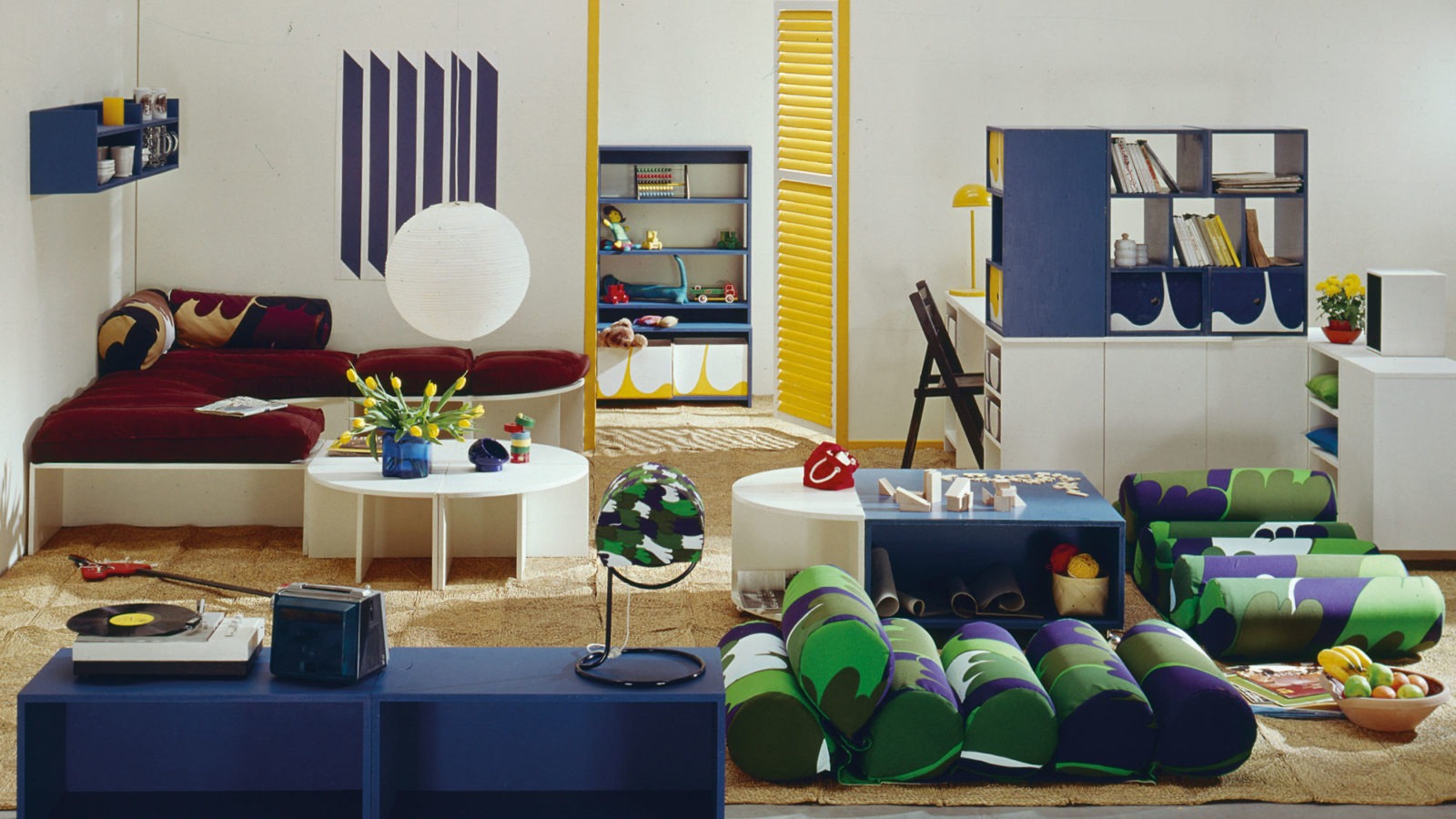
Ikea is more than a furniture store – it’s a global symbol of bold, functional and democratic design. Few brands have achieved what it has: the creation of an aesthetic language so coherent that it resonates across 63 countries of operation. That’s not just influence – it’s cultural authorship.
At the heart of this identity lies the brand’s textiles, which are almost as iconic as its flat-pack furniture. Playful and eclectic, Ikea’s patterns helped rewrite expectations of what homes could look like.
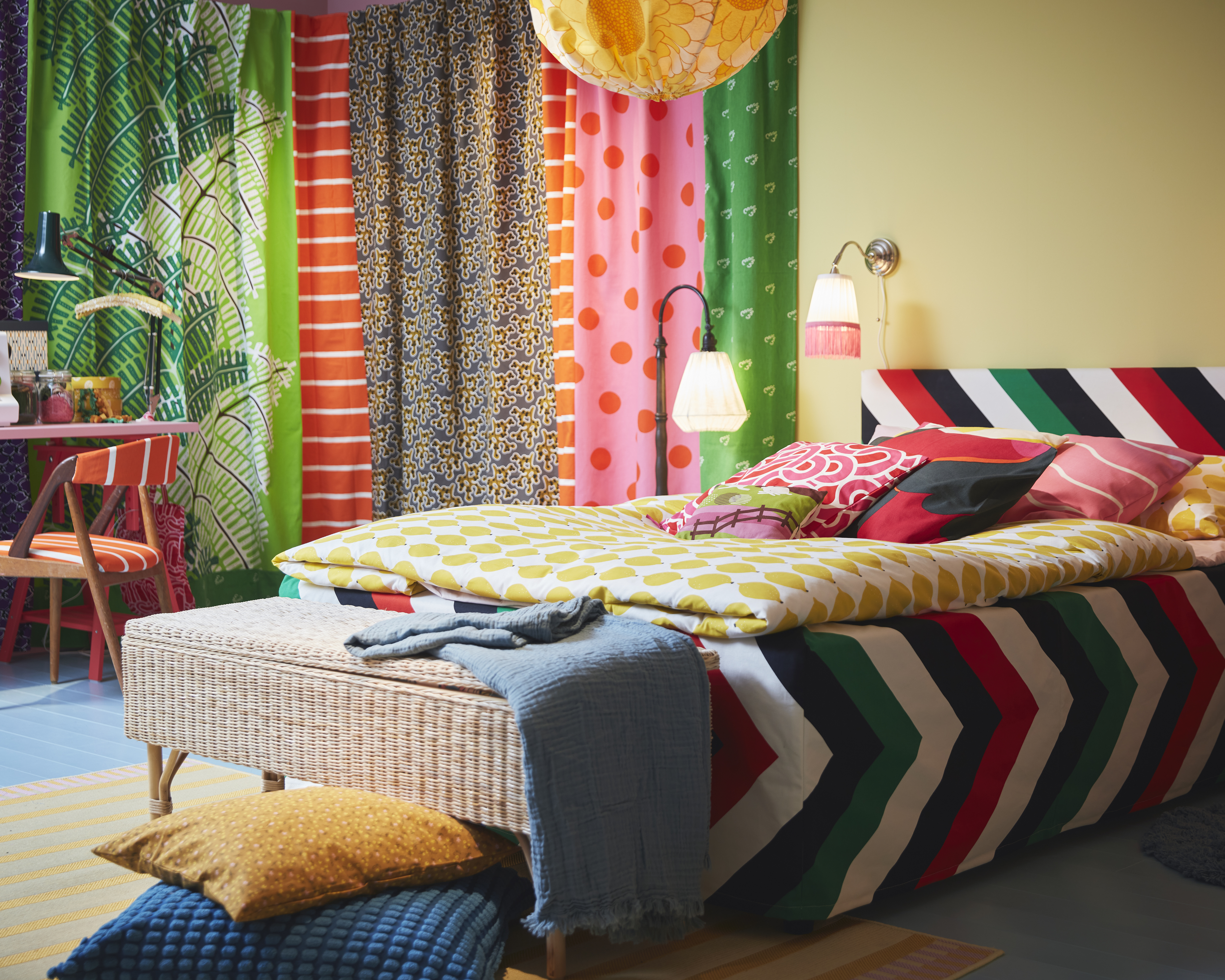
The 'Ikea: Magical Patterns' exhibition space
A new exhibition at Edinburgh’s Dovecot Gallery – ‘Ikea: Magical Patterns’, which opens today (18 July) and runs until 17 January 2026 – asks: how did the brand make prints, colour and visual boldness central to everyday interiors? Showcasing 180 textile designs, it celebrates those who have helped define Ikea’s visual DNA. We explored the show ahead of its opening.
The birth of a design language
In the 1940s and 50s, avant-garde textiles were usually confined to elite homes. Mass-market fabrics were muted and predictable – and often floral. Ikea, founded in 1943 by 17-year-old Ingvar Kamprad (‘Ikea’ is an acronym formed from his name and address), was initially no different. ‘You go through the early catalogues, and everything was beige or grey,’ observes Anna Sandberg Falk, an exhibition curator at the Ikea Museum in Älmhult, Sweden. ‘Then there was this really strong idea at the beginning of the 1960s to add something – and colour was that thing.’
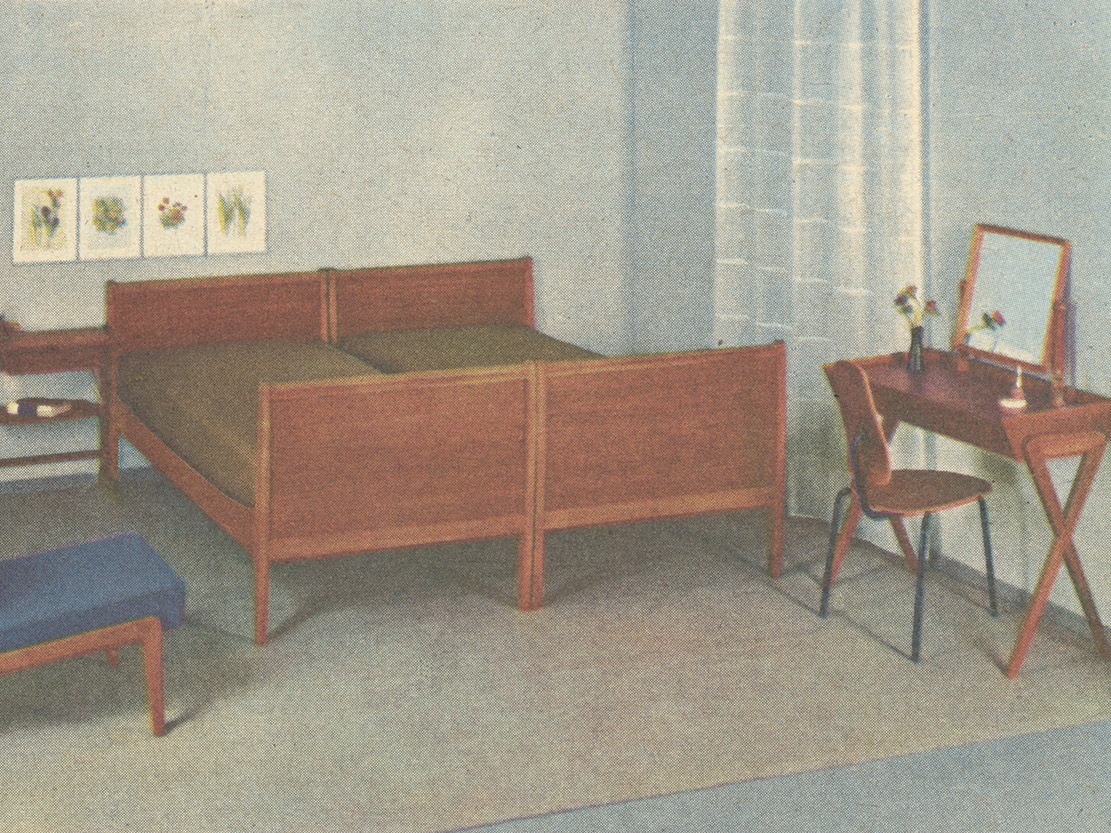
Ikea campaign imagery from the 1950s
In the early 1960s, Kamprad made a pivotal move: not a textiles expert himself, he hired young, mostly female designers from art schools and industrial backgrounds to revamp the department. Designers such as Benita Haymach and Ann-Charlotte Andersson were given almost total creative freedom. ‘They worked with these bold – and, at the time, quite provocative and unexpected – patterns and colours, inspired by contemporary art, everyday life and youth culture. And that turned into a really strong Ikea thing – an identity we still carry today,’ notes Sandberg Falk.
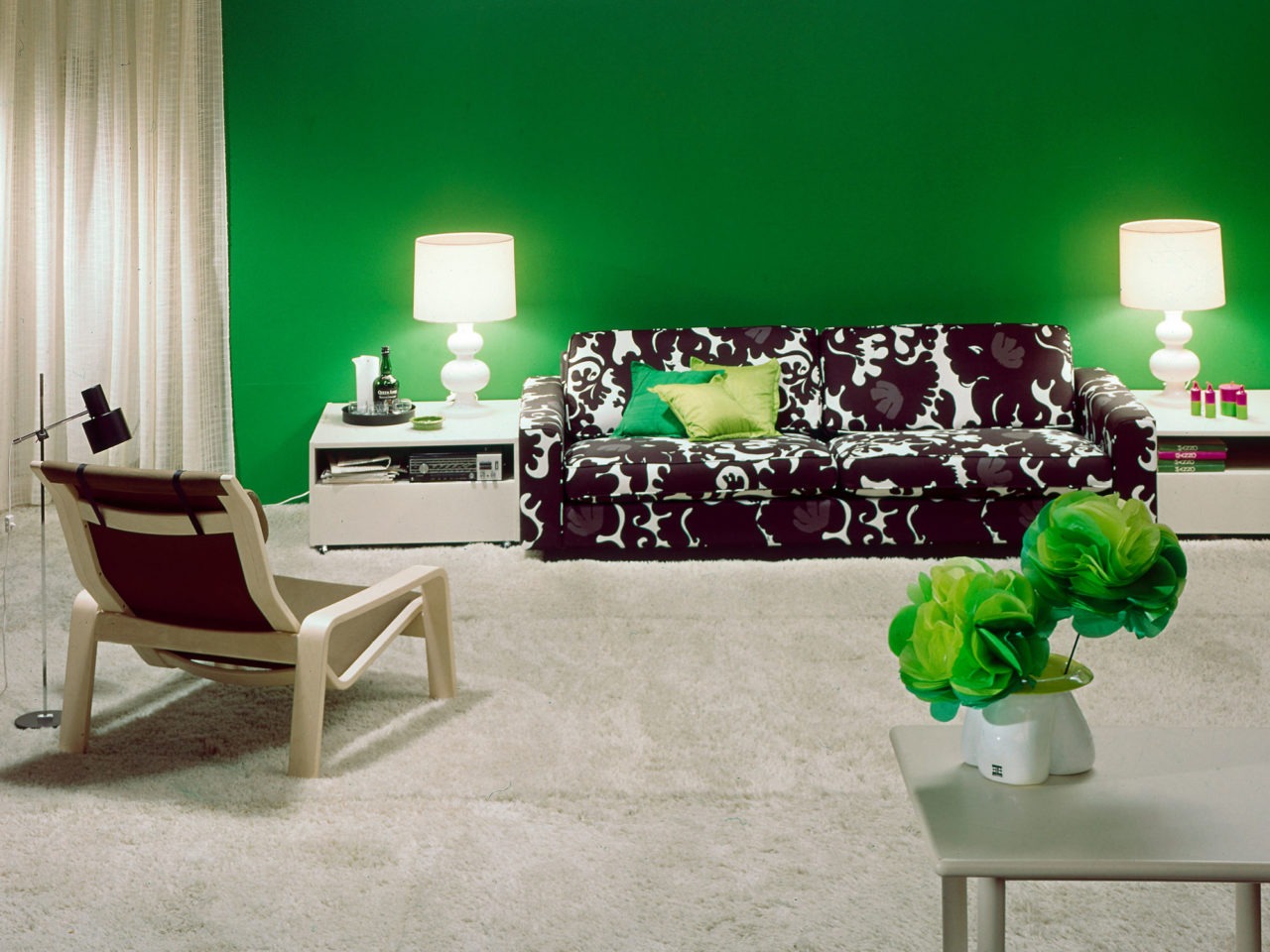
Campaign imagery from the 1960s
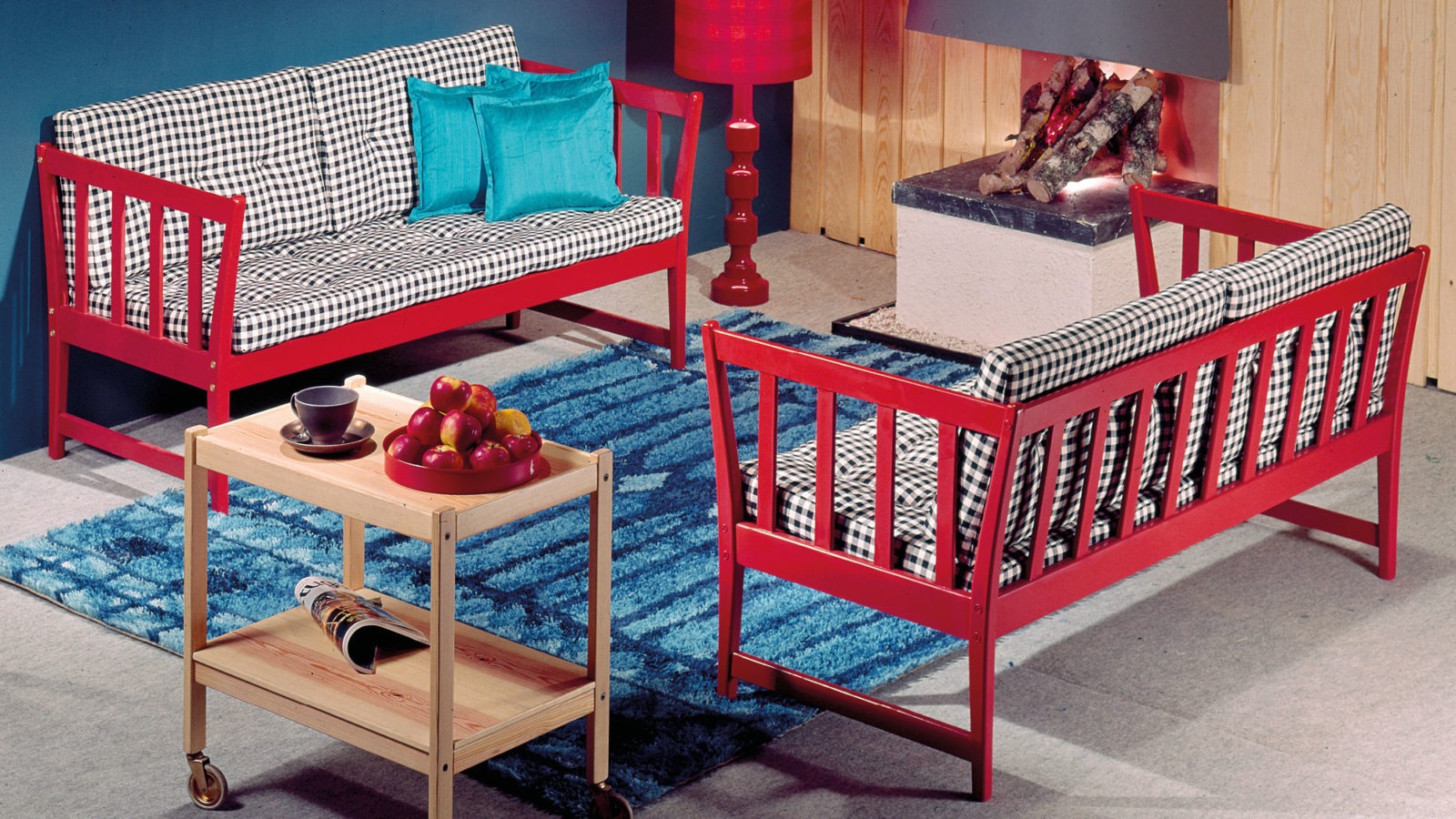
Campaign imagery from the 1960s
Icons of innovation
One of the most influential figures of this period was textile artist Inez Svensson. From 1971, she led a shift toward geometric patterns that felt modern and punchy – designs like ‘Strix’ and ‘Strax’, noteworthy for their horizontal stripes at a time when most machines only printed vertically, and which landed on the cover of the 1972 Ikea catalogue.
Svensson also co-founded the design collective 10-Gruppen (‘Group of Ten’), which was formed with a mind to challenge the dominance of dainty florals in textiles. Its 1978 collection for Ikea introduced bold, youthful patterns and, in 1980, Svensson initiated a long-term collaboration between the group and the brand. 10-Gruppen’s work was revived in 2017 at Ikea, underscoring its lasting relevance.
Receive our daily digest of inspiration, escapism and design stories from around the world direct to your inbox.
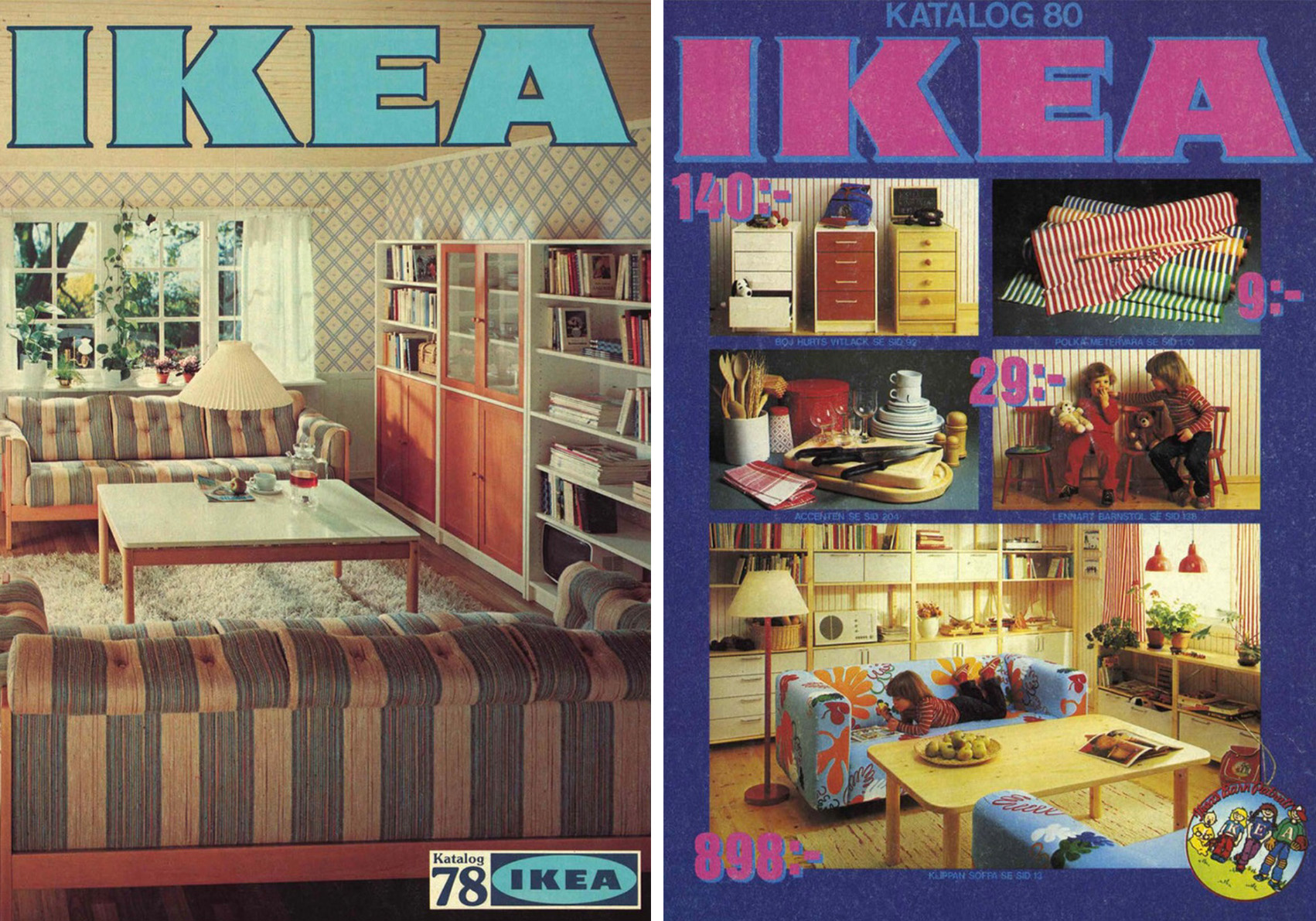
The Ikea catalogue covers in 1978 and 1980
Another key designer was Sven Fristedt, who joined in 1967 and introduced a range of organic, psychedelic and Nordic folk-inspired motifs (‘Myrten’, ‘Tarantella’, ‘Sommargyllen’ and ‘Alfi’) which further pushed the boundaries of what ‘tasteful’ design could look like – it could be quirky – even a bit odd. ‘They’re not weird, that’s not the right word,’ says Sandberg Falk. ‘But they’re fun in a way. There’s something curious about them.’
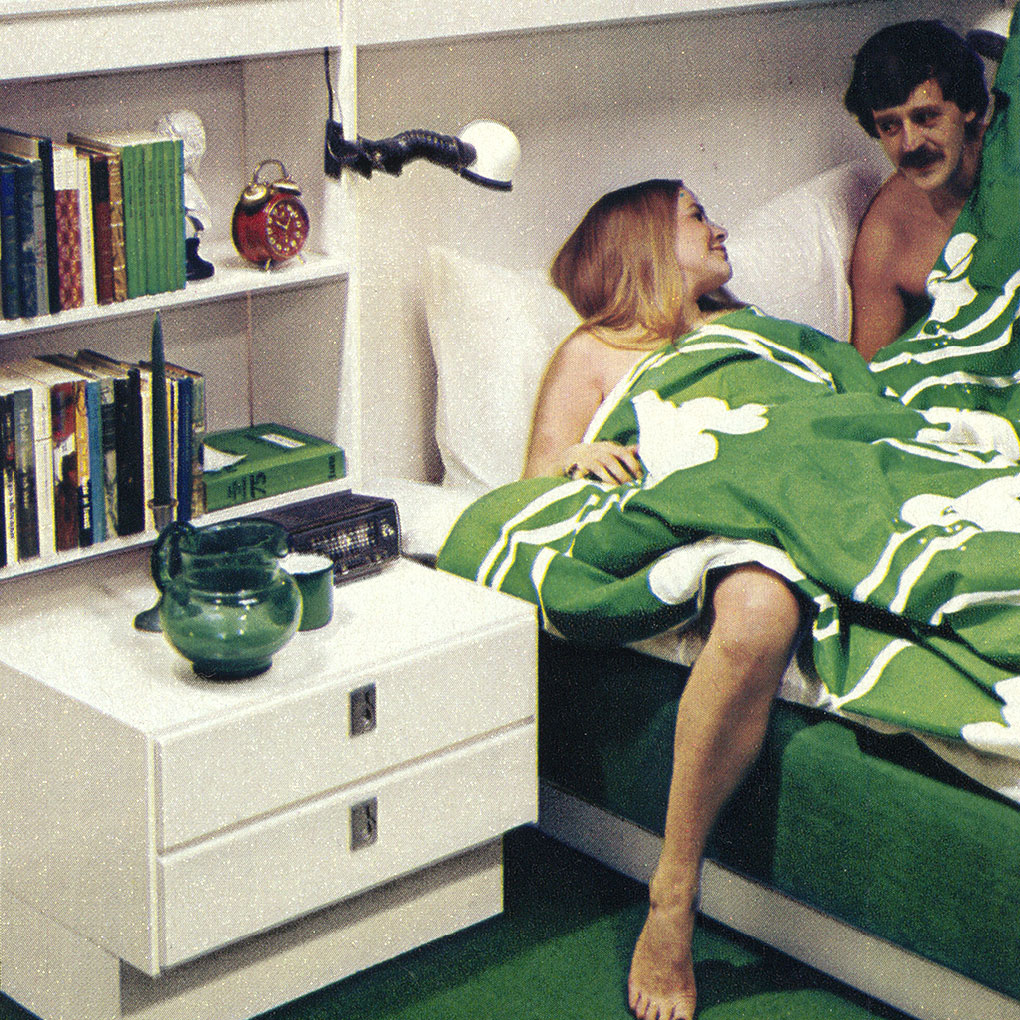
1970s campaign imagery
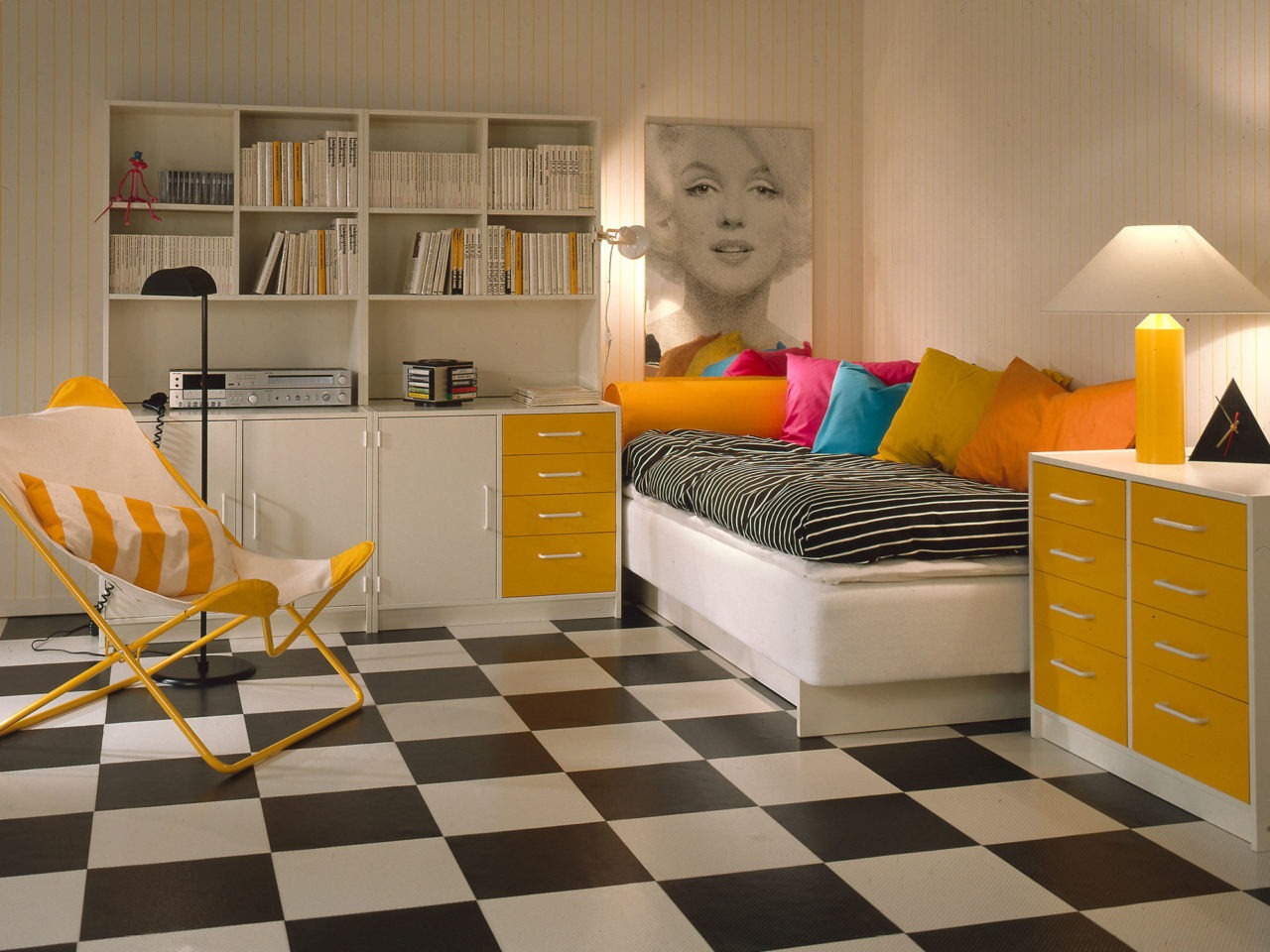
1980s campaign imagery
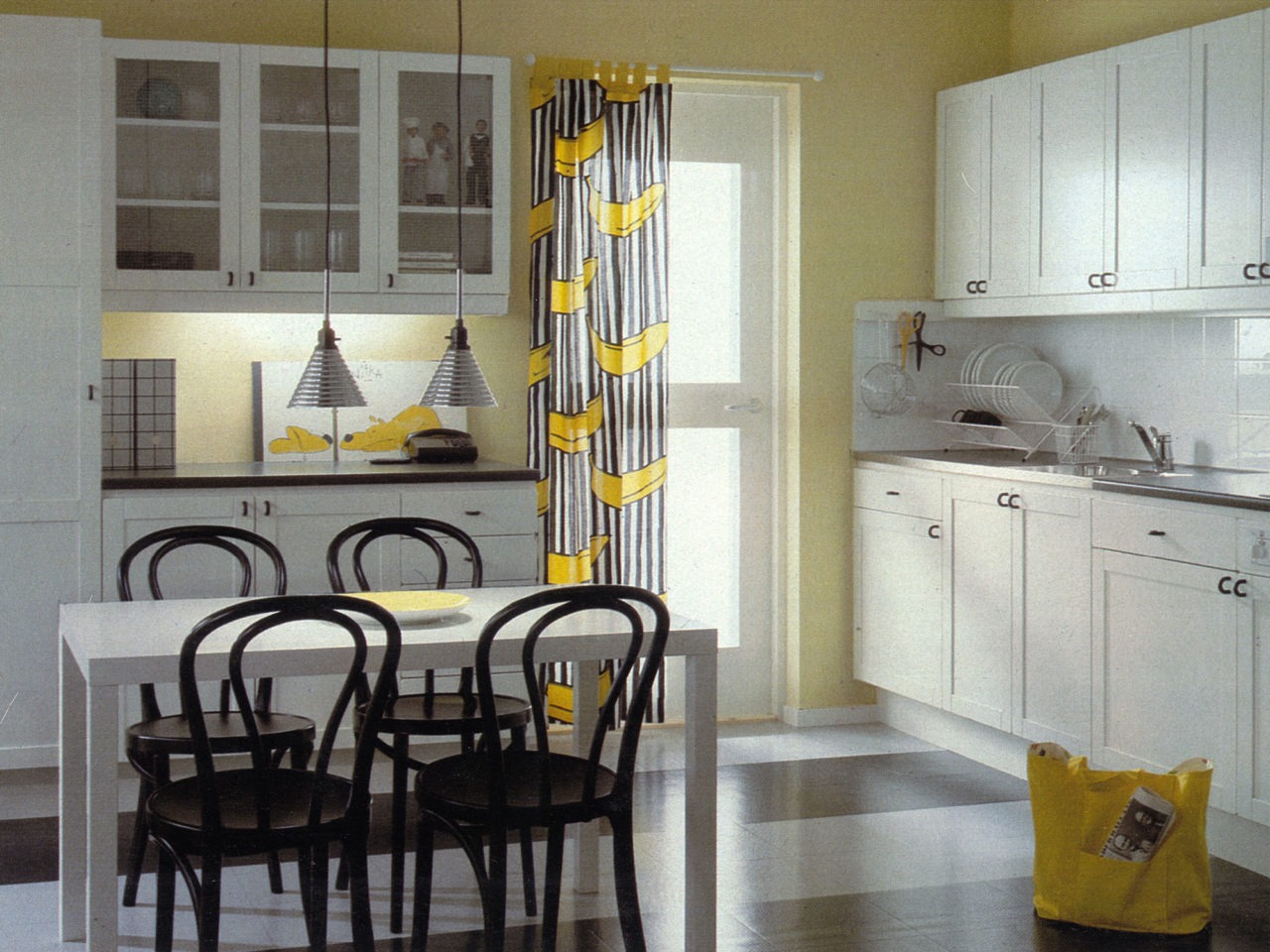
Campaign imagery from the 1990s, showing the ‘Randig Banan’ print, featured on a curtain
The golden era and beyond
The 1970s were the golden age of Ikea textiles, setting the blueprint for the brand’s future. Svensson continued to contribute graphic works into the 1980s and 90s, such as ‘Randig Banan’ (1985), the striped banana print, which returned in 2013 to much fanfare. Children’s prints by designers like Anna-Lena Emdén, including ‘Sigge Snagg’ and ‘Konrad/Pensel’, introduced humour and narrative to home goods, showing that homes could be lighthearted and imaginative – not just restrained and ‘grown-up’.
The millennium yielded patterns such as Anna Sörensson’s ‘Stockholm’ (2006), which remains popular today, and Ikea's 80th anniversary Nytillverkad collection (2023), which included ‘Svedjenäva’ (based on ‘Alfi’) and ‘Nickfibbla’ (based on ‘Strix’ and ‘Strax’).
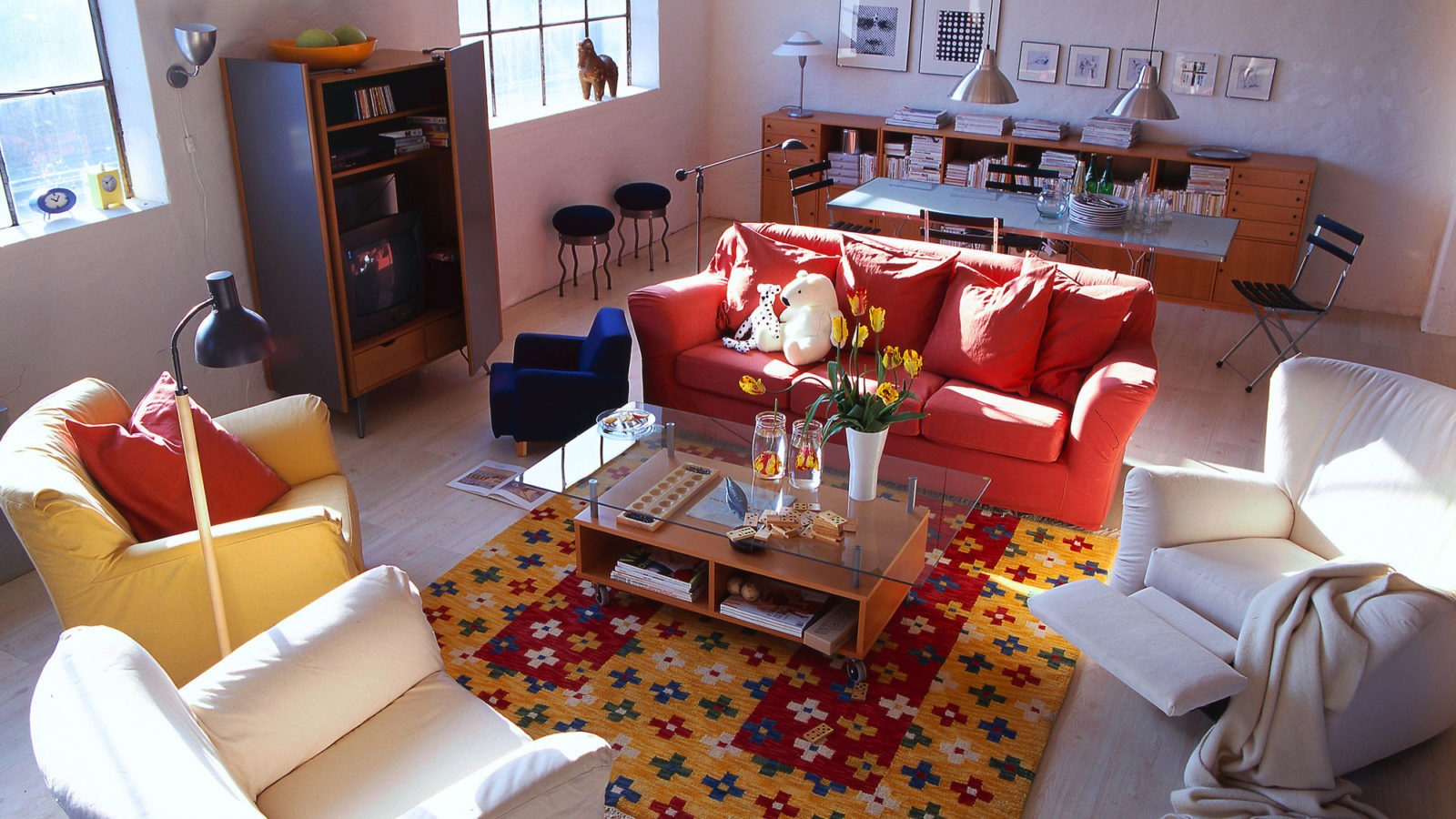
Campaign imagery from the 1990s
The creative freedom that Ikea extends to its designers remains unchanged: freelance designer Ida Pettersson Preutz recalls her first brief for the brand, which was to create a pattern based on food. Inspired by ‘Randig Banan’, which she had loved as a child, she sketched broccoli (now the ‘Anniken’ print): ‘At first, the feedback was, “We like it, but we want more.” So I added a rough pencil-drawn background – and that was it. They said, “Now we’ve got it.”’ Another pattern was repeatedly rejected by clients until she showed it to Tom Hedqvist, another Ikea designer and co-founder of 10-Gruppen. ‘He pointed to the sketch that everyone else had said no to, and said, “that one”,’ Pettersson Preutz recalls.
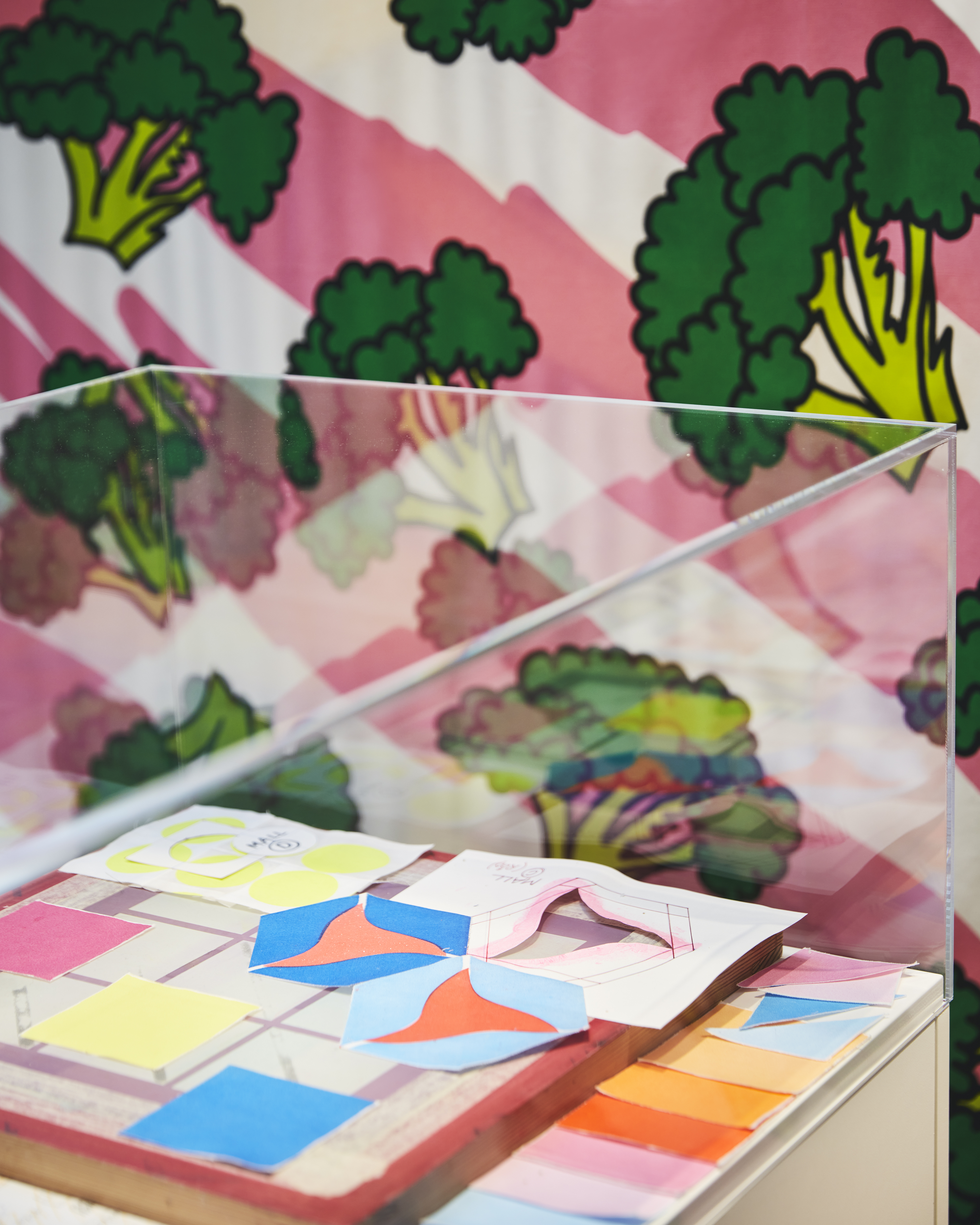
A still from the exhibition, showing the ‘Anniken’ print by artist Ida Pettersson Preutz
The Ikea effect
Ikea’s approach to pattern design wasn’t just about aesthetics – it was rooted in its philosophy of accessibility, championed from the outset by the famously frugal Kamprad. ‘The starting point at Ikea is always a price that’s affordable for people,’ says Sandberg Falk. ‘Form, function and style are built around that constraint. In this model, textiles are key – they’re often the easiest way to bring design into the home without spending a fortune.’
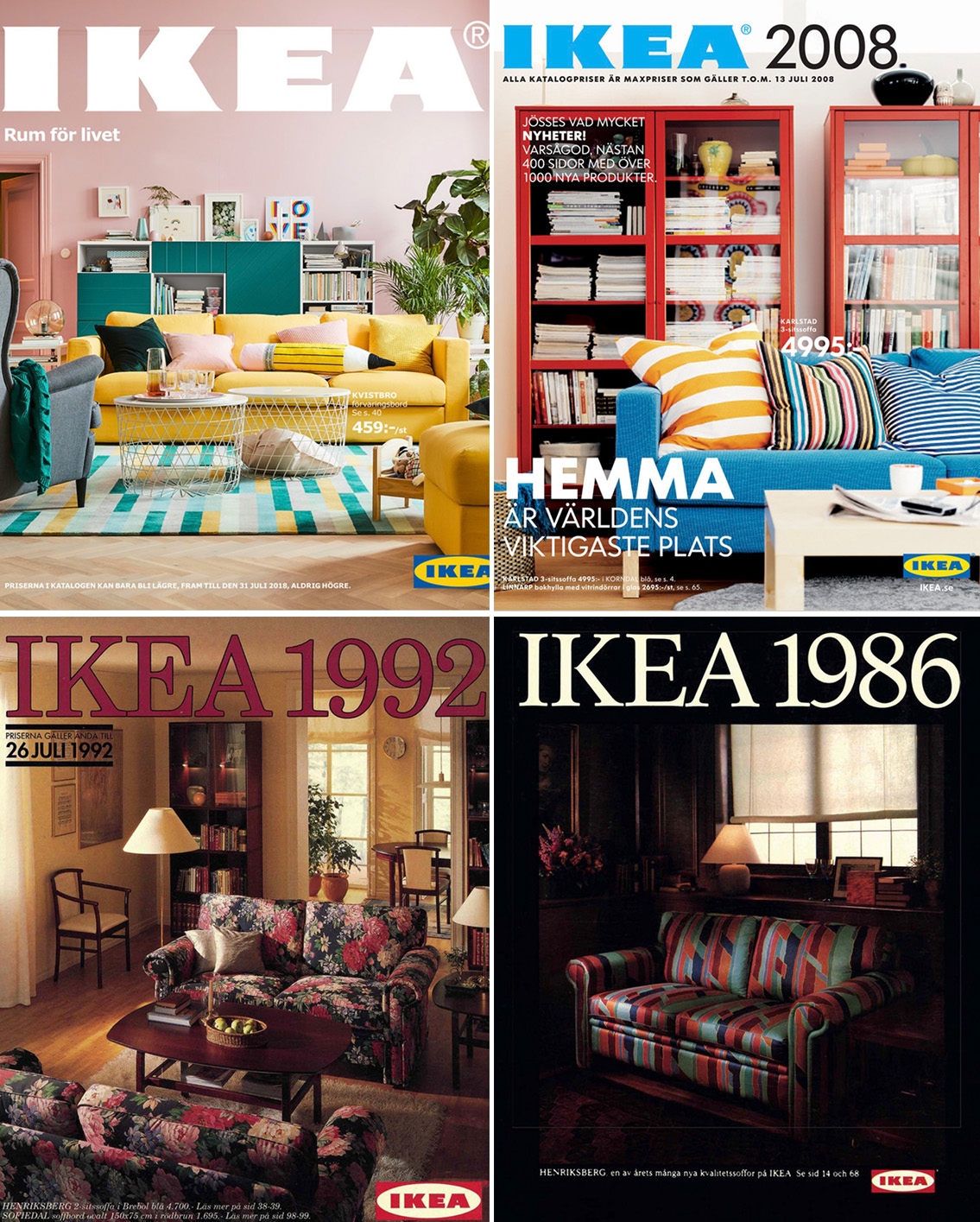
The Ikea catalogue covers in 2018, 2008, 1992 and 1986
In this way, textiles ‘[gave] ordinary people access to bold taste’, the curator continues. Ikea's patterns didn’t – and don’t – demand design literacy; they encourage creativity and play. Fabrics sold by the metre and a mix-and-match ethos (the 2024 ‘Tyg’ line, for example, features pre‑cut cotton fabrics, designed to inspire DIY and upcycling projects with no sewing skills required) empower people to be co-creators of their homes. ‘That’s one of our missions – we want to open up the design world for the many.’
'Ikea: Magical Patterns' will run until 17 January 2026 at Dovecot Gallery in Edinburgh
Anna Solomon is Wallpaper’s digital staff writer, working across all of Wallpaper.com’s core pillars. She has a special interest in interiors and curates the weekly spotlight series, The Inside Story. Before joining the team at the start of 2025, she was senior editor at Luxury London Magazine and Luxurylondon.co.uk, where she covered all things lifestyle and interviewed tastemakers such as Jimmy Choo, Michael Kors, Priya Ahluwalia, Zandra Rhodes, and Ellen von Unwerth.
-
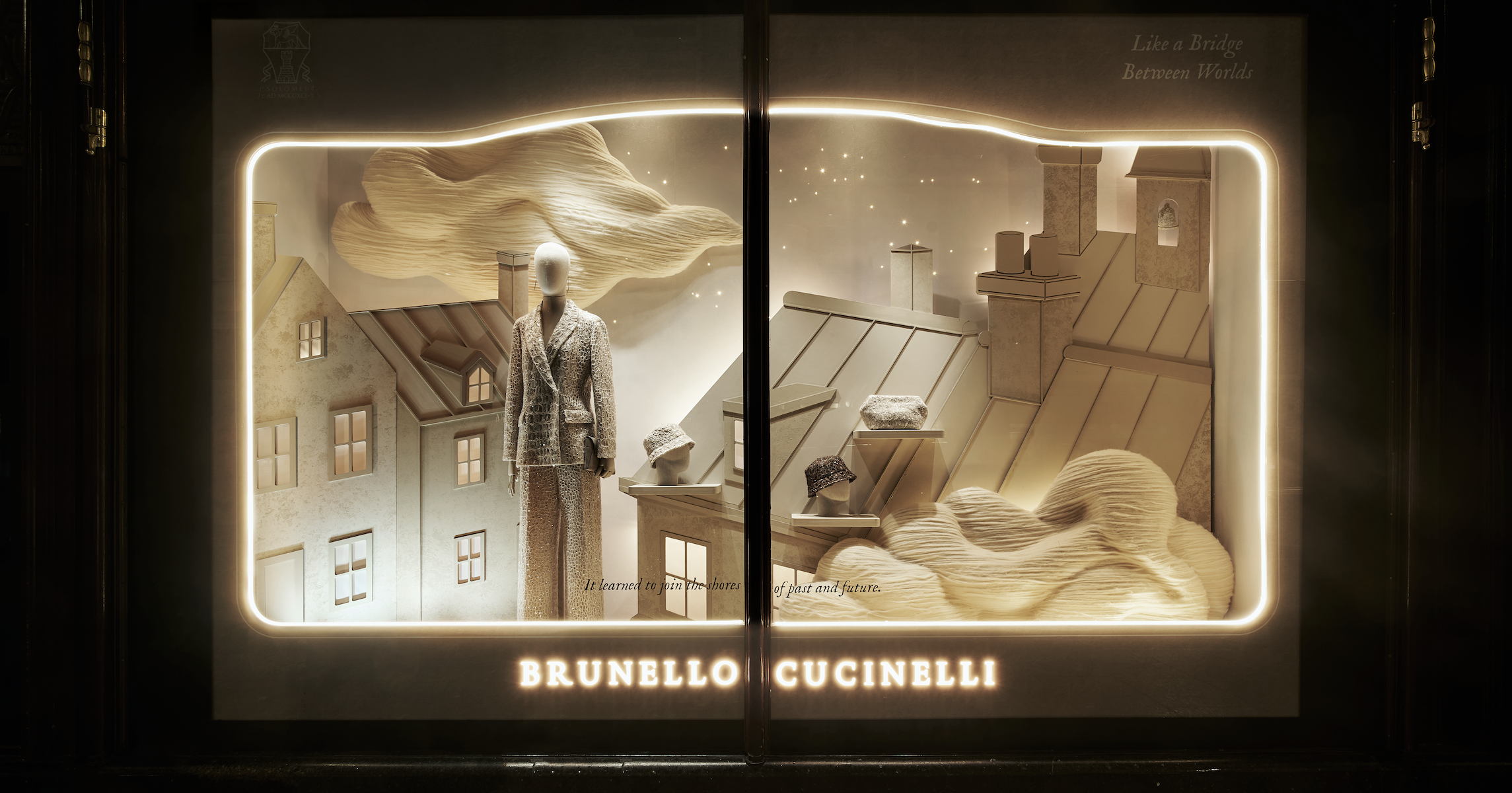 Brunello Cucinelli’s festive takeover of Harrods turns the department store into a cashmere wonderland
Brunello Cucinelli’s festive takeover of Harrods turns the department store into a cashmere wonderlandUnveiled this morning, the Umbrian fashion house has taken over the store’s iconic Brompton Road windows, celebrating the spirit of its home town of Solomeo in fantastical fashion
-
 Each mundane object tells a story at Pace’s tribute to the everyday
Each mundane object tells a story at Pace’s tribute to the everydayIn a group exhibition, ‘Monument to the Unimportant’, artists give the seemingly insignificant – from discarded clothes to weeds in cracks – a longer look
-
 Discover The Legacy, Hong Kong’s eye-catching new condo
Discover The Legacy, Hong Kong’s eye-catching new condoThe Legacy, by ACPV Architects Antonio Citterio Patricia Viel, is a striking new condo tower that aims to ‘create a sense of community and solidarity among people’
-
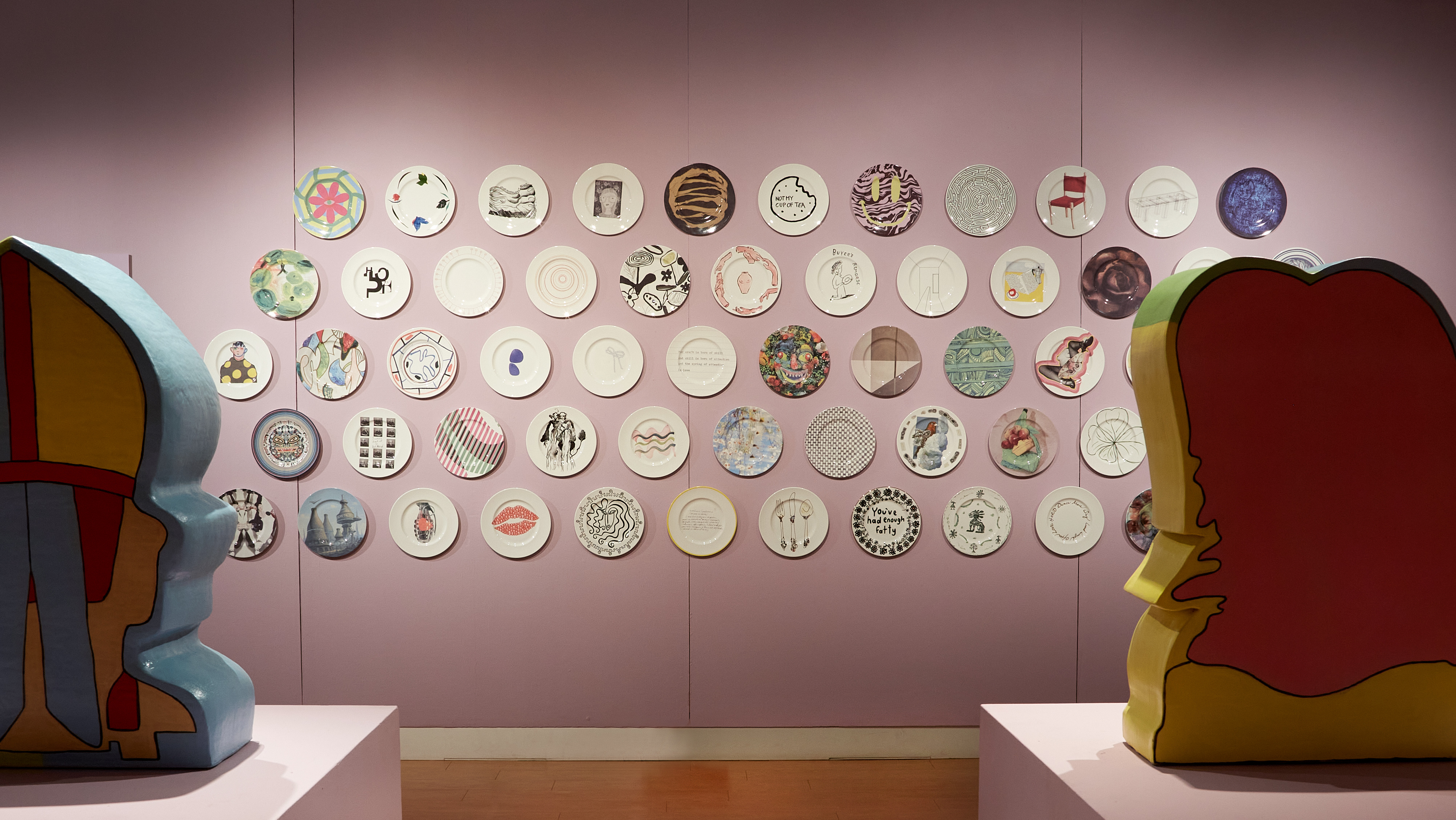 ‘100 Years, 60 Designers, 1 Future’: 1882 Ltd plate auction supports ceramic craft
‘100 Years, 60 Designers, 1 Future’: 1882 Ltd plate auction supports ceramic craftThe ceramics brand’s founder Emily Johnson asked 60 artists, designers, musicians and architects – from John Pawson to Robbie Williams – to design plates, which will be auctioned to fund the next generation of craftspeople
-
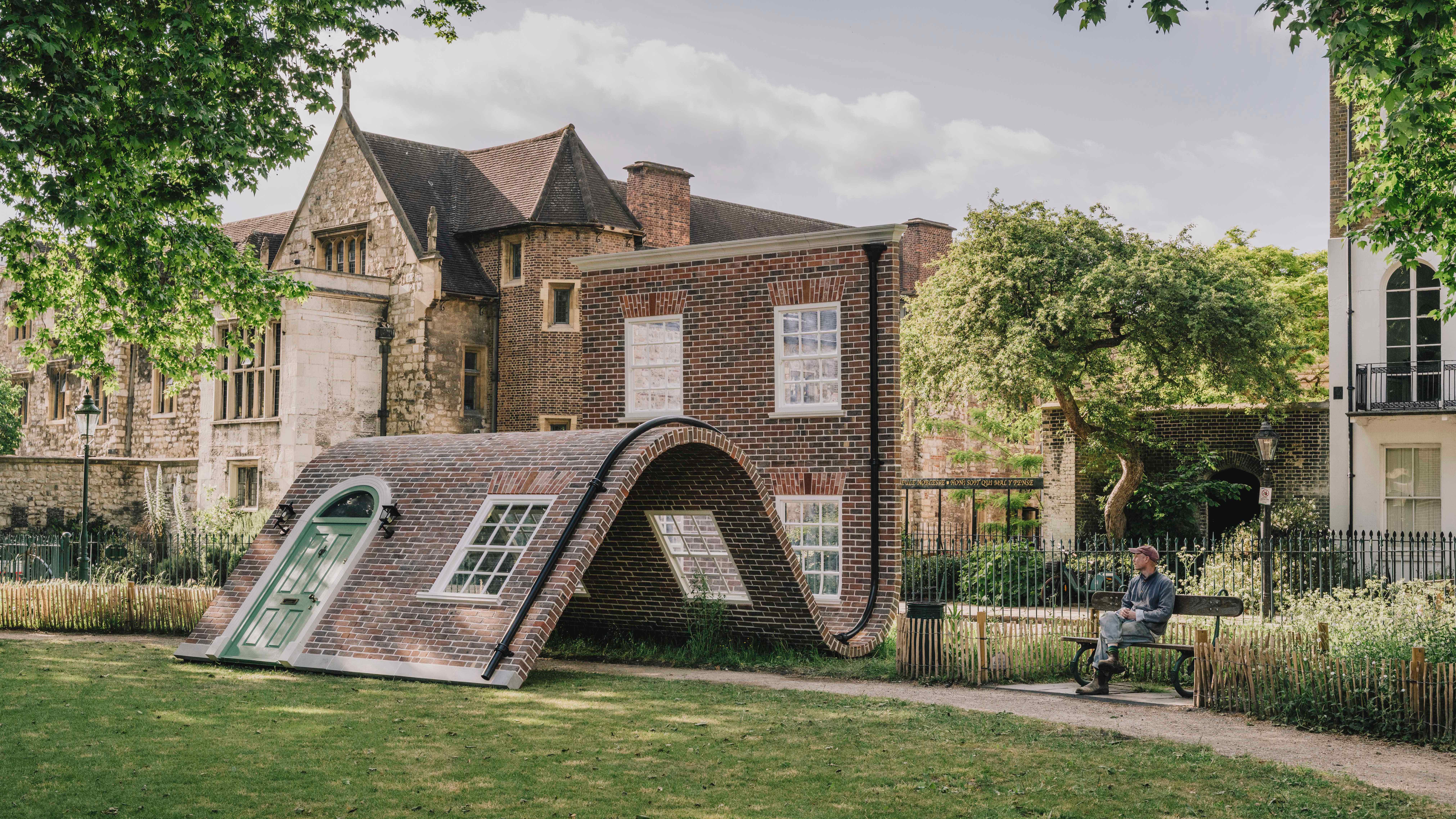 11 things that caught our eye at Clerkenwell Design Week 2025
11 things that caught our eye at Clerkenwell Design Week 2025The Wallpaper* team bring you highlights from London’s Clerkenwell Design Week (20-22 May) – from public installations to product launches and a biscuit bar
-
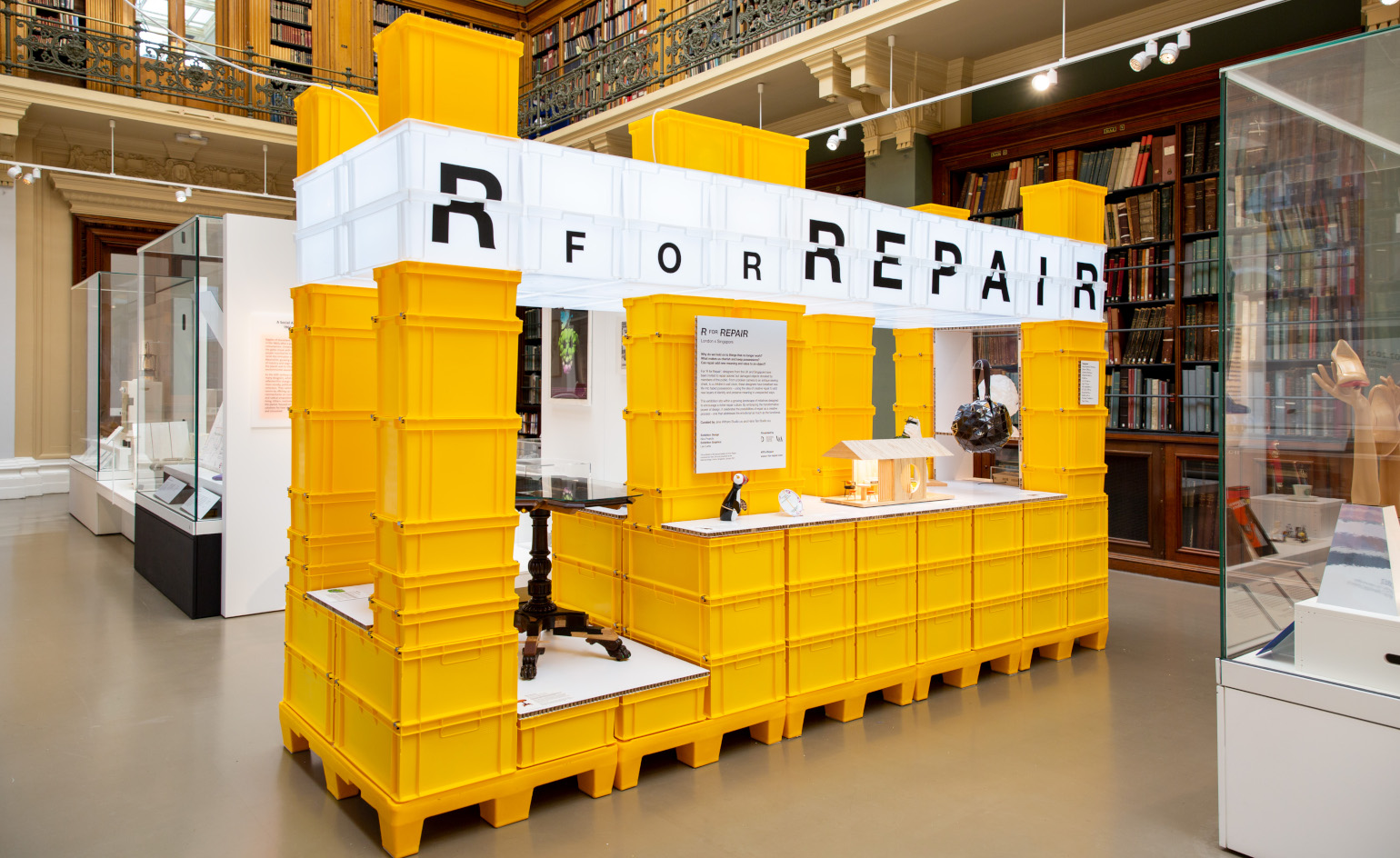 ‘R for Repair’ at London Design Festival displays broken objects, re-formed
‘R for Repair’ at London Design Festival displays broken objects, re-formedIn the second half of a two-part exhibition and as part of London Design Festival 2022, ‘R for Repair’ at the V&A displays broken objects, re-formed
-
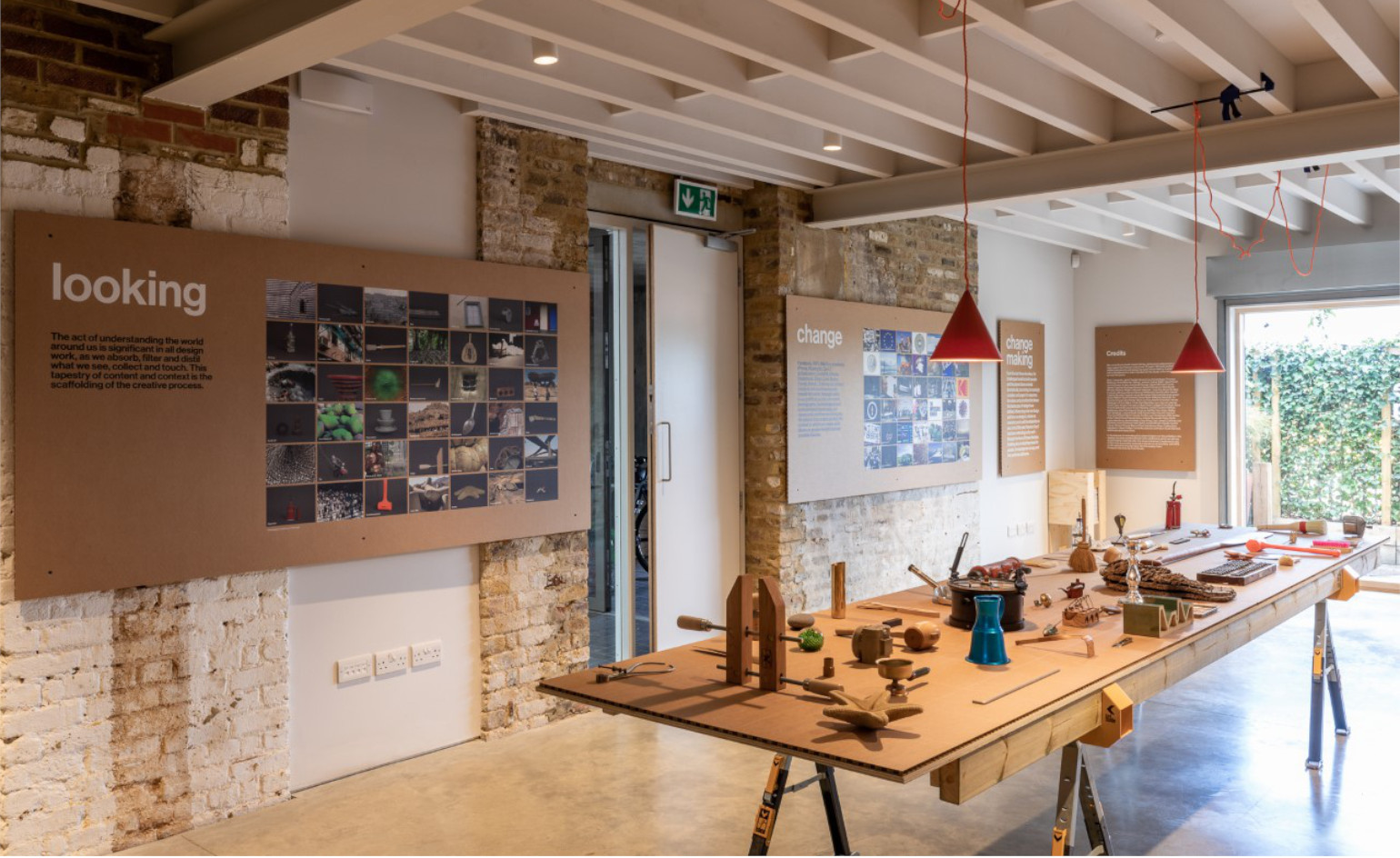 ‘Finding quality through the act of making’: Pearson Lloyd celebrates 25 years of design
‘Finding quality through the act of making’: Pearson Lloyd celebrates 25 years of designPearson Lloyd’s show ‘Change Making’ reflects on past designs from its archives, showcasing the influences on and evolution of the studio, from furniture design to the NHS
-
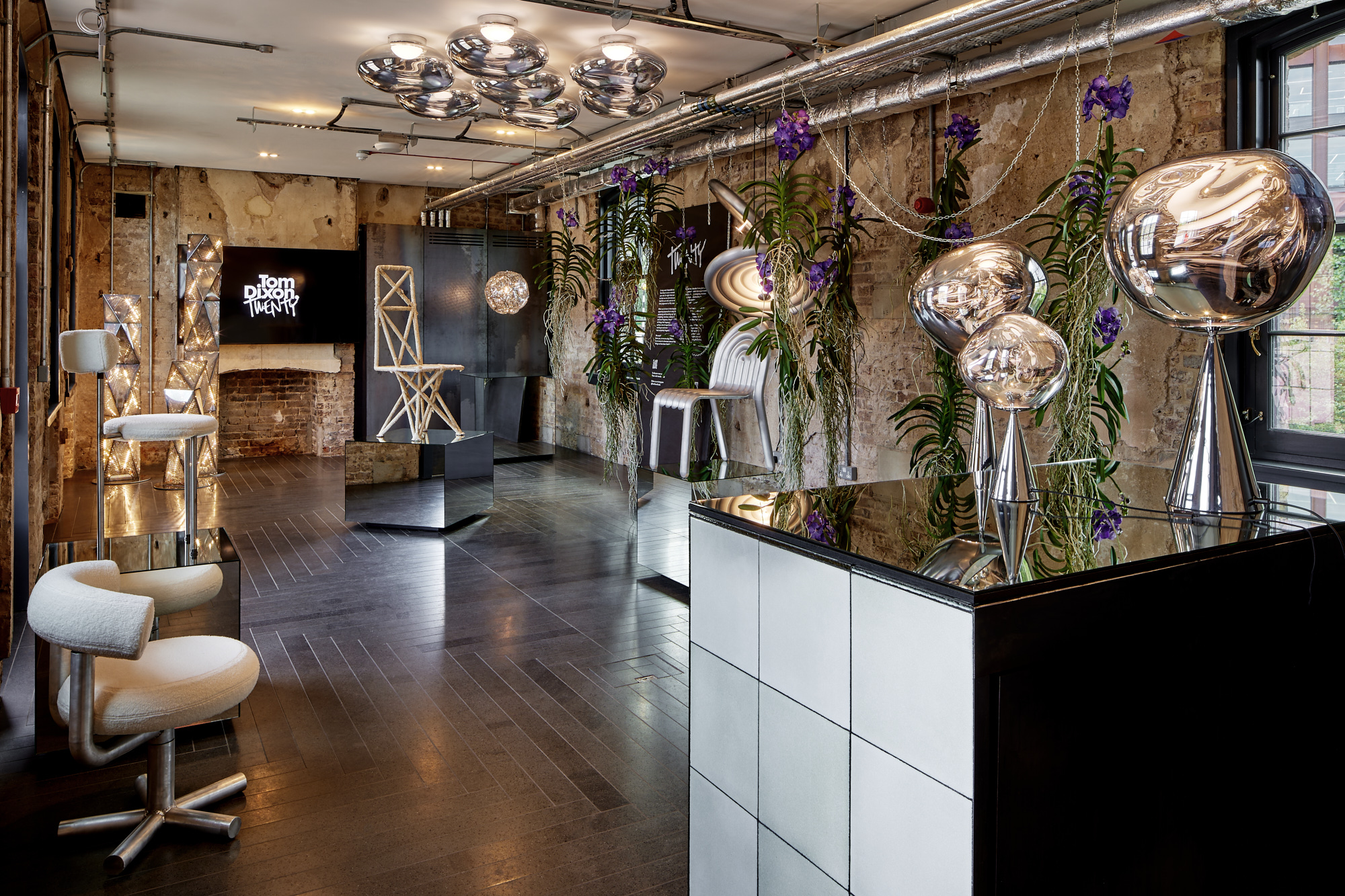 Tom Dixon marks his studio's 20 years with a show of design experiments
Tom Dixon marks his studio's 20 years with a show of design experimentsMushroom, cork, steel coral and more: Tom Dixon showcases an overview of his design experiments as he celebrates his practice's 20 years
-
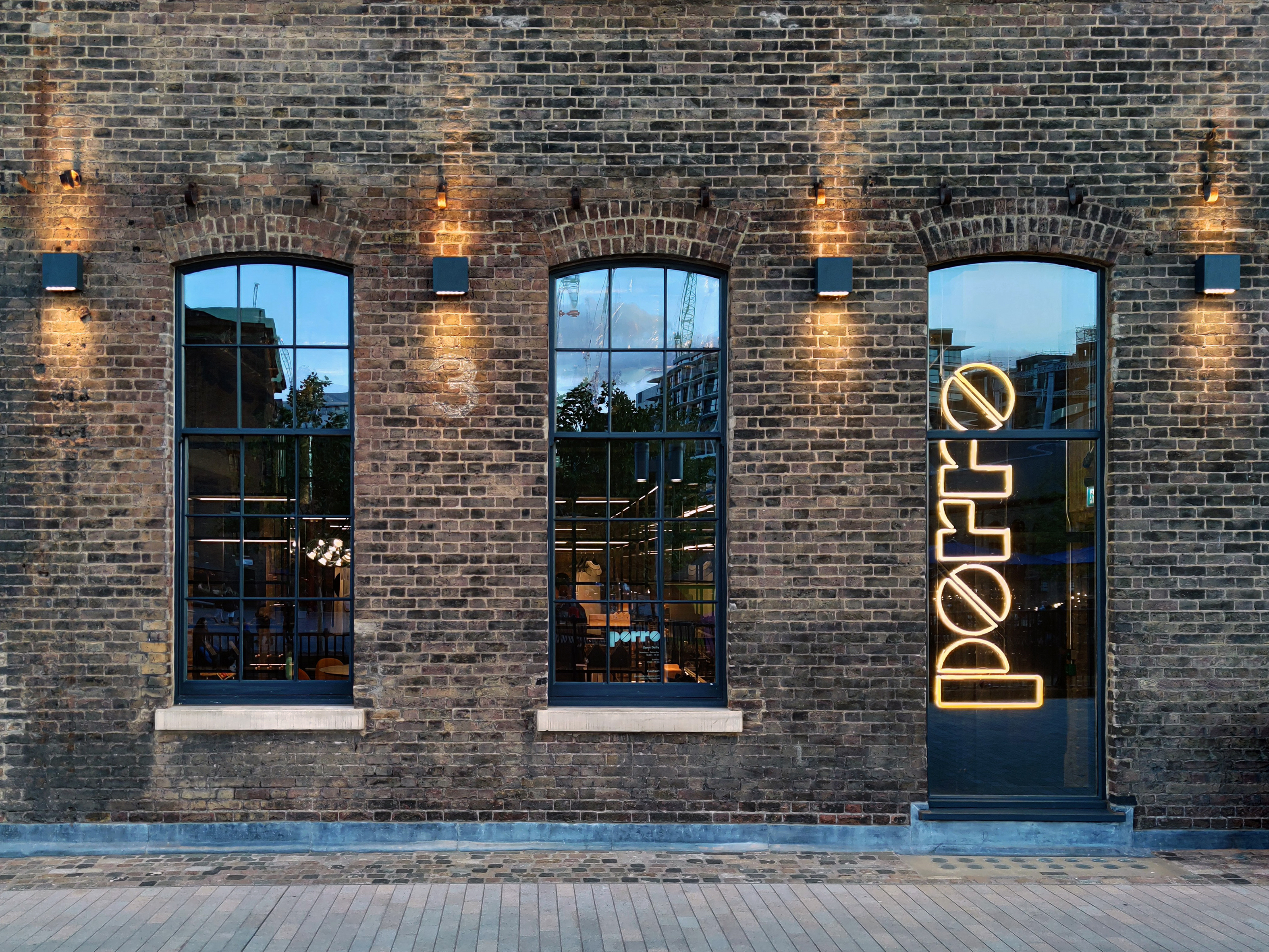 Porro unveils new London showroom at Coal Office
Porro unveils new London showroom at Coal OfficeLondon Design Festival 2022: industrial architecture meets pure geometries in the new Porro showroom, taking over a space within Tom Dixon’s Coal Office to showcase the brand’s systems and furniture
-
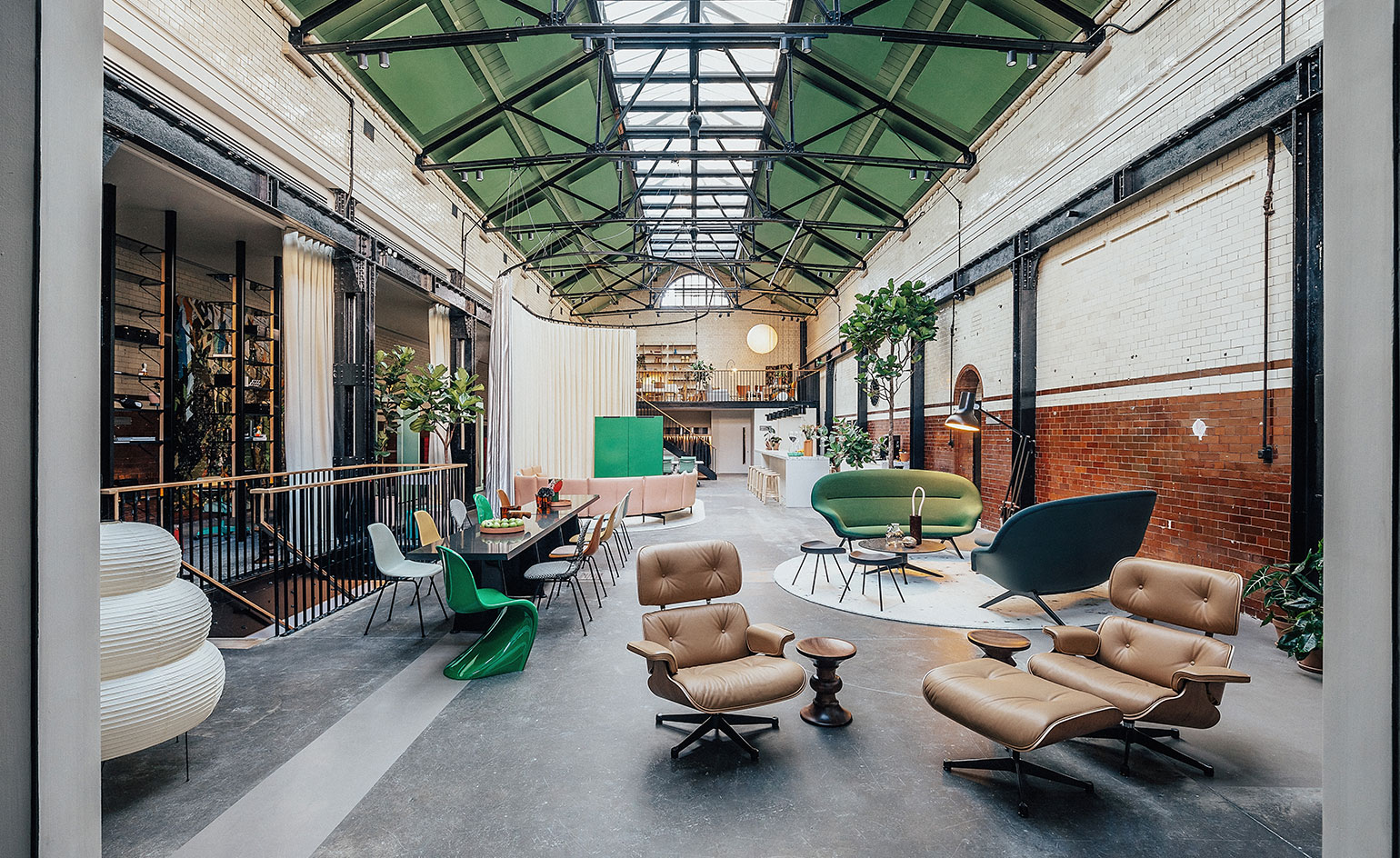 Vitra unveils new London home in the Tramshed, Shoreditch
Vitra unveils new London home in the Tramshed, ShoreditchLondon Design Festival 2022: after a year-long renovation, Vitra opens the door to its new showroom in the heart of Shoreditch
-
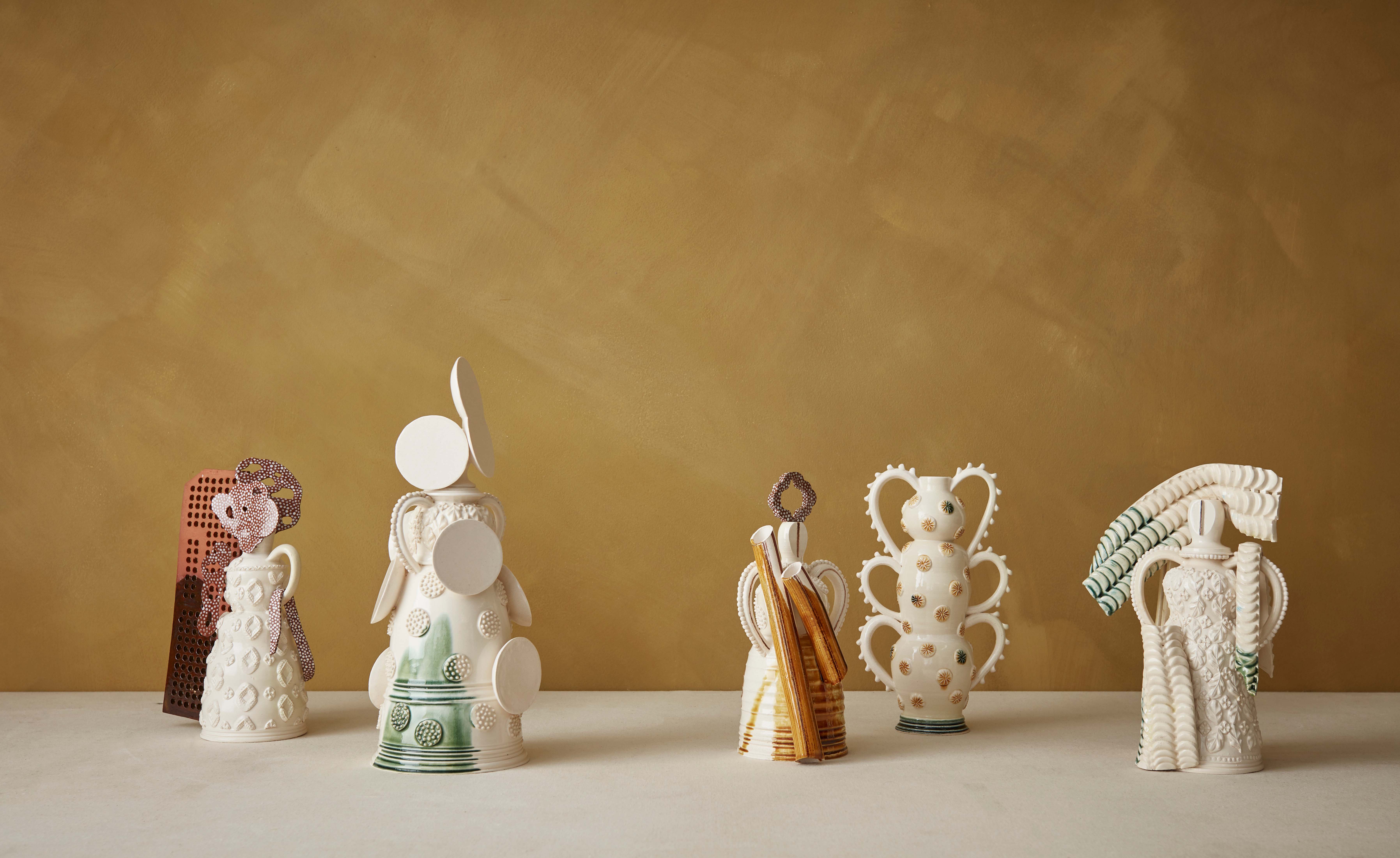 Mudlarking beside the River Thames inspires The New Craftsmen’s makers
Mudlarking beside the River Thames inspires The New Craftsmen’s makersLondon Design Festival 2022: The New Craftsmen’s new collection, ‘Claylarks’, features work from a group of creatives inspired by a River Thames mudlarking expedition